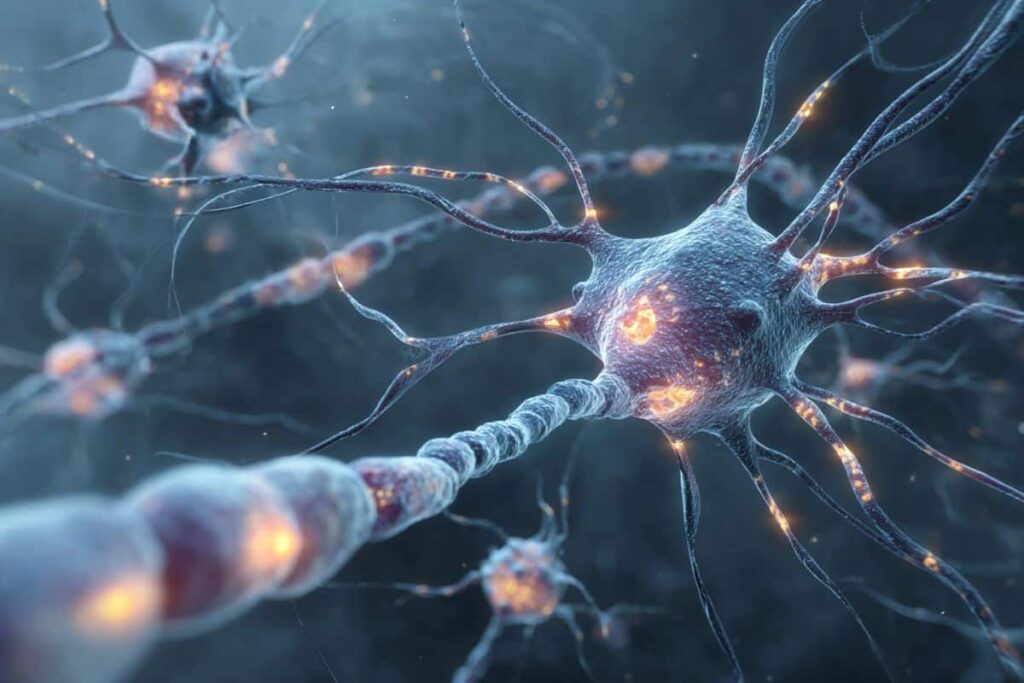
A groundbreaking study has unveiled that Alzheimer’s disease is not solely the result of plaques and tangles but also involves a breakdown in communication between brain cells. Researchers from The Ohio State University, using advanced imaging and computational modeling, have mapped the intricate interactions between neurons and glial cells at the molecular level. This research has identified the SEMA6D–TREM2 pathway, a key player in helping microglia clear harmful amyloid buildup, offering a potential new target for therapeutic intervention.
The study, published in Science Translational Medicine, was led by a multidisciplinary team from The Ohio State University Wexner Medical Center and College of Medicine. Their work highlights the importance of cellular crosstalk in the progression of Alzheimer’s disease and opens up new avenues for treatment strategies aimed at slowing the disease’s progression.
Understanding the Crosstalk
Alzheimer’s disease has long been associated with the accumulation of amyloid plaques and neurofibrillary tangles in the brain. However, this new research suggests that the disease’s progression is also significantly influenced by the disruption of communication pathways between neurons and glial cells. These pathways, when functioning correctly, play a crucial role in maintaining brain health and function.
According to Dr. Oscar Harari, co-author of the study and director of the Division of Neurogenetics at The Ohio State University, “By mapping these cell interactions at the molecular level, we identified key pathways that could be pivotal in both the onset and progression of neurodegeneration.”
“Cellular crosstalk may serve as an attractive molecular target for drug development,” Dr. Harari emphasized, highlighting the potential for new therapeutic interventions.
The SEMA6D–TREM2 Pathway
The study’s most significant finding is the identification of the SEMA6D–TREM2 pathway, which plays a crucial role in enhancing the amyloid-clearing functions of microglia. Microglia are the brain’s resident immune cells responsible for clearing debris and maintaining a healthy neural environment. The disruption of this pathway may contribute to the accumulation of amyloid plaques, a hallmark of Alzheimer’s disease.
Dr. Tae-Wan Kim, co-author of the study and associate professor at Columbia University, explained, “Our research shows that Alzheimer’s is not only driven by plaques and tangles but also by a breakdown in communication between brain cells. By uncovering the SEMA6D–TREM2 crosstalk pathway, we reveal a new way to enhance the amyloid-clearing functions of microglia and potentially slow Alzheimer’s progression.”
Implications for Future Research and Treatment
This discovery opens up new possibilities for therapeutic interventions targeting the cellular communication pathways in Alzheimer’s disease. By focusing on enhancing microglial function, researchers hope to develop treatments that can slow or even halt the progression of the disease.
The study included contributions from a wide array of institutions, including Massachusetts General Hospital, Harvard Medical School, and the Dominantly Inherited Alzheimer Network, among others. This collaborative effort underscores the global importance of addressing Alzheimer’s disease and the need for innovative research approaches.
Funding for this research came from numerous sources, including the National Institute on Aging, the Alzheimer’s Association, and the Michael J. Fox Foundation for Parkinson’s Research, highlighting the widespread support for advancing Alzheimer’s research.
Looking Ahead
The identification of the SEMA6D–TREM2 pathway as a potential therapeutic target marks a significant step forward in Alzheimer’s research. As scientists continue to explore the complex interactions within the brain’s cellular network, the hope is to develop more effective treatments that can improve the quality of life for those affected by this devastating disease.
With ongoing research and collaboration across various scientific disciplines, the future of Alzheimer’s treatment looks promising. The insights gained from this study not only enhance our understanding of the disease but also pave the way for innovative strategies to combat it.
As the scientific community builds on these findings, the potential for breakthroughs in Alzheimer’s treatment continues to grow, offering hope to millions of patients and their families worldwide.






